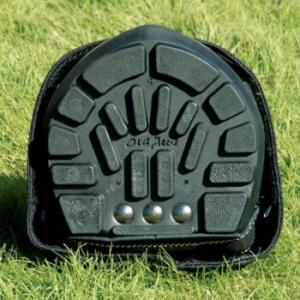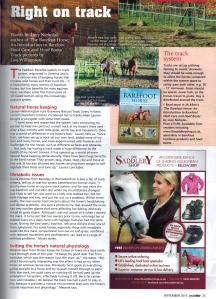All working horses can experience the effects of concussive forces that are driven into the limbs and feet from the ground. The heavier the horse, the greater the vertical hoof force distribution; one reason why ponies are notoriously popular driving animals!
Barefoot advocates believe the healthy, bare equine foot horse experiences dramatically less concussion on hard ground than the shod horse, and has improved hoof mechanism; e.g. the hoof naturally contracts and expands with more functionality. But can driving horses work without shoes, and avoid concussive injury? The answer, according to many hoofcare experts, is yes.
Concussion frequently linked to foot shape
There’s not a ‘one size fits all’ mentality in the field of barefoot trimming – each horse’s situation must be taken on its own merits, and its workload, the capabilities of the animal’s hoofcare professional, and the horse’s foot shape assessed. Concussion is frequently linked to the horse’s foot shape. According to CEO of hoof boot company Easy Care, Garrett Ford,
Hereditary defects and poor trimming or shoeing can create a foot shape with a low heel, which puts strain on the deep flexor tendon and navicular bone. If blood supply and nourishment do not reach the bones of the foot, there could be serious implications.
According to Ford, iron shoes increase concussion. “They hold the frog off the ground, thus reducing blood circulation through the hoof. Shoeing can cause contracted heels, corns, contribute to navicular disease, sidebones, ringbones, and so on. A good many of these problems arise simply because nailing on an iron shoe locks in problems that a barefoot hoof would automatically adjust to, by natural wear and freedom,” he believes.
(Of course, this is Ford’s opinion; it certainly gives us plenty of food for thought, and healthy debate! We like to encourage discussion about hoof functionality, and I would encourage owners to discuss it with their horses’ hoofcare professional).
Many observers of barefoot driving enthusiasts may wrongly assume that carriage horses and ponies, many of whom trot on hard surfaces for long periods of time, are being subjected to excessive concussion; but this isn’t necessarily so. Driven horses are not subjected to the same stresses as ridden horses, which are constantly adapting to the rider’s balance – especially in the case of an in-experienced rider on a young or spooky horse. There is of course also the additional weight of the rider to consider, in the riding horse – and a heavy, unbalanced rider will compromise the animal’s gait and balance.
Barefoot horses enjoy dramatically reduced concussion
American natural hoof care specialist and driving trainer, Heike Bean, says a barefoot horse with healthy hooves can feel the ground better and enjoy dramatically reduced concussion on hard ground. “They are also more sure-footed, usually move more freely, and have better traction on most surfaces,” Bean states. “When balancing a hoof, it is of utmost importance to ensure that it lands heel first. Heel-first landing is necessary for ideal joint loading and shock absorption. Toe-first landing stresses ligaments within the hoof capsule and places concussion on structures not suited for this purpose.
“Driving horses land toe-first going uphill, and heel-first going down. This is caused by a locking mechanism in the knee and cannot be altered, but it can be worsened by poor trimming; since driving horses have increased stress on their hooves when pulling a vehicle uphill, timely breakover of all four hooves is essential to minimise stress. This factor is often overlooked when shoeing, trimming, or booting a horse.”
Heike says driving enthusiasts formerly faced limitations regarding suitable hoof boots on the market. “However, with today’s boot styles, driving can be done barefoot,” she states.
Visit The Saddlery Shop’s website at www.thesaddleryshop.co.uk to see the wide range of hoof boots and accessories available.


